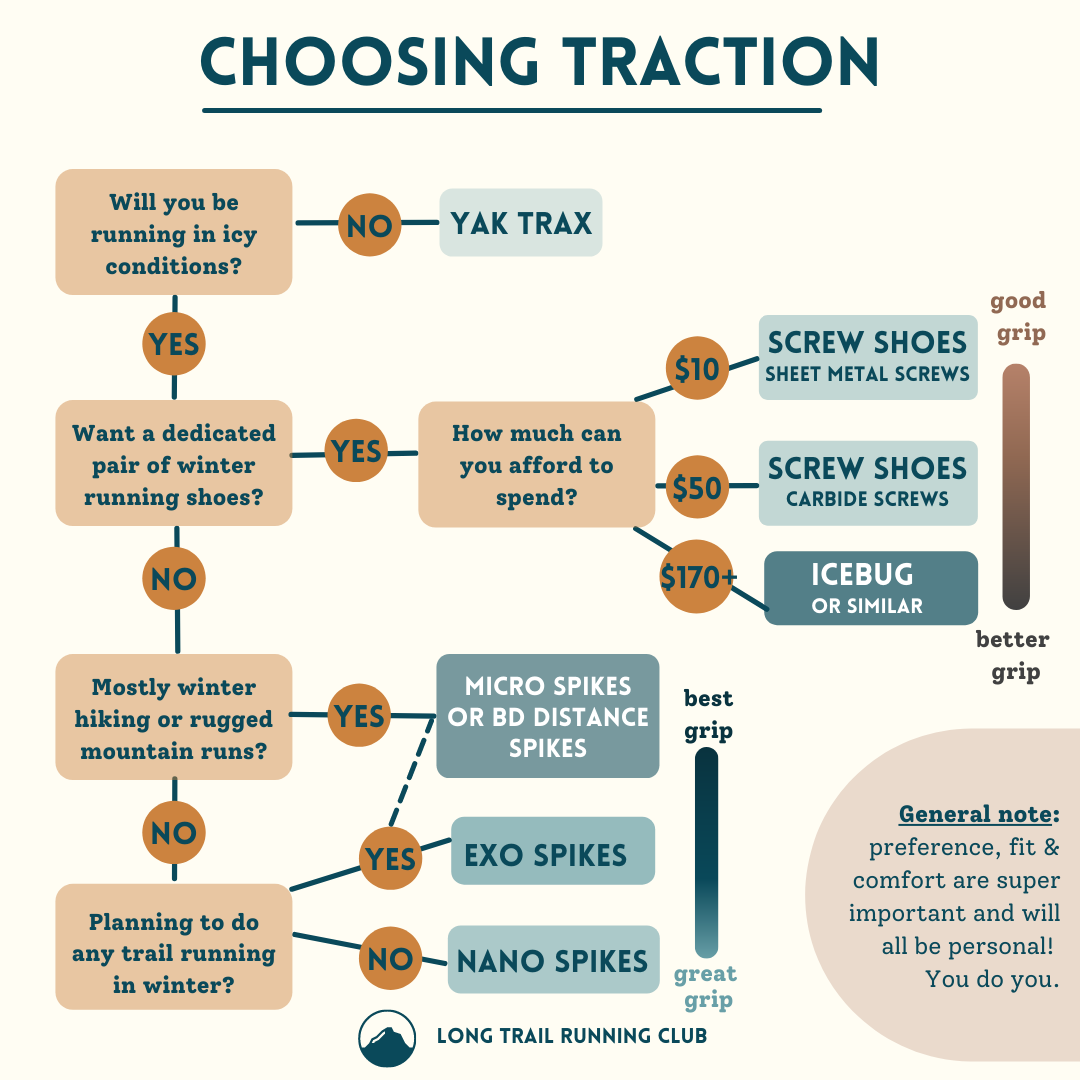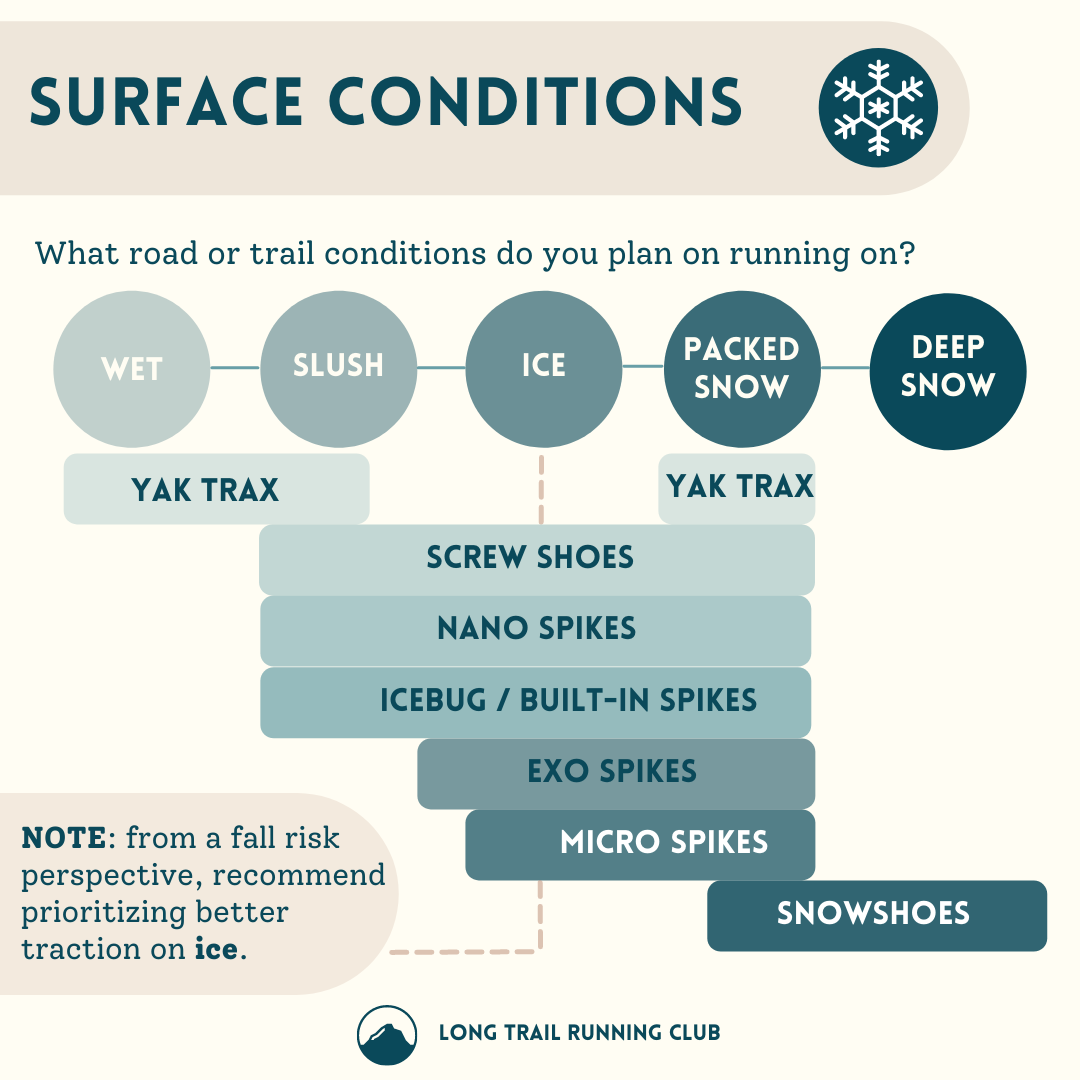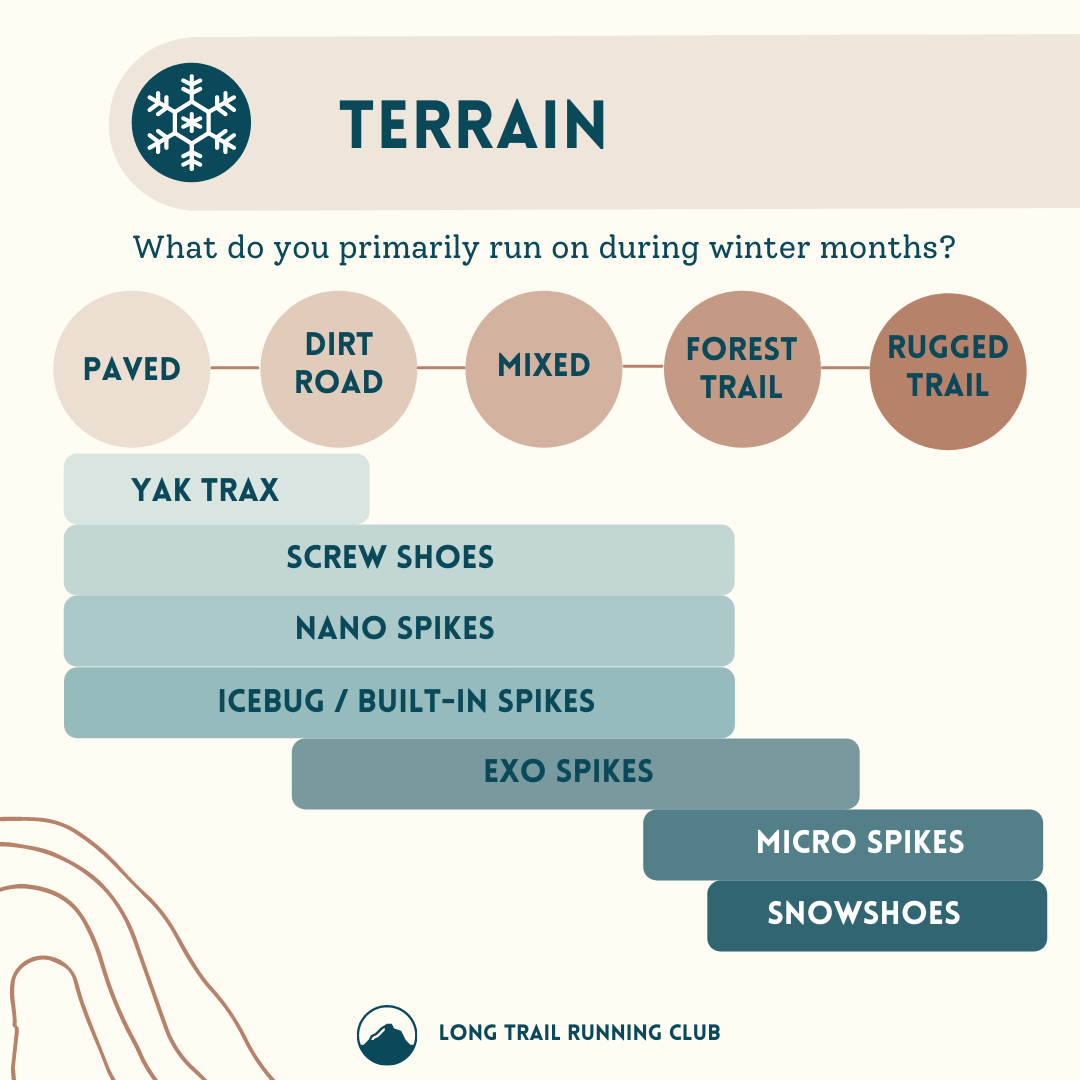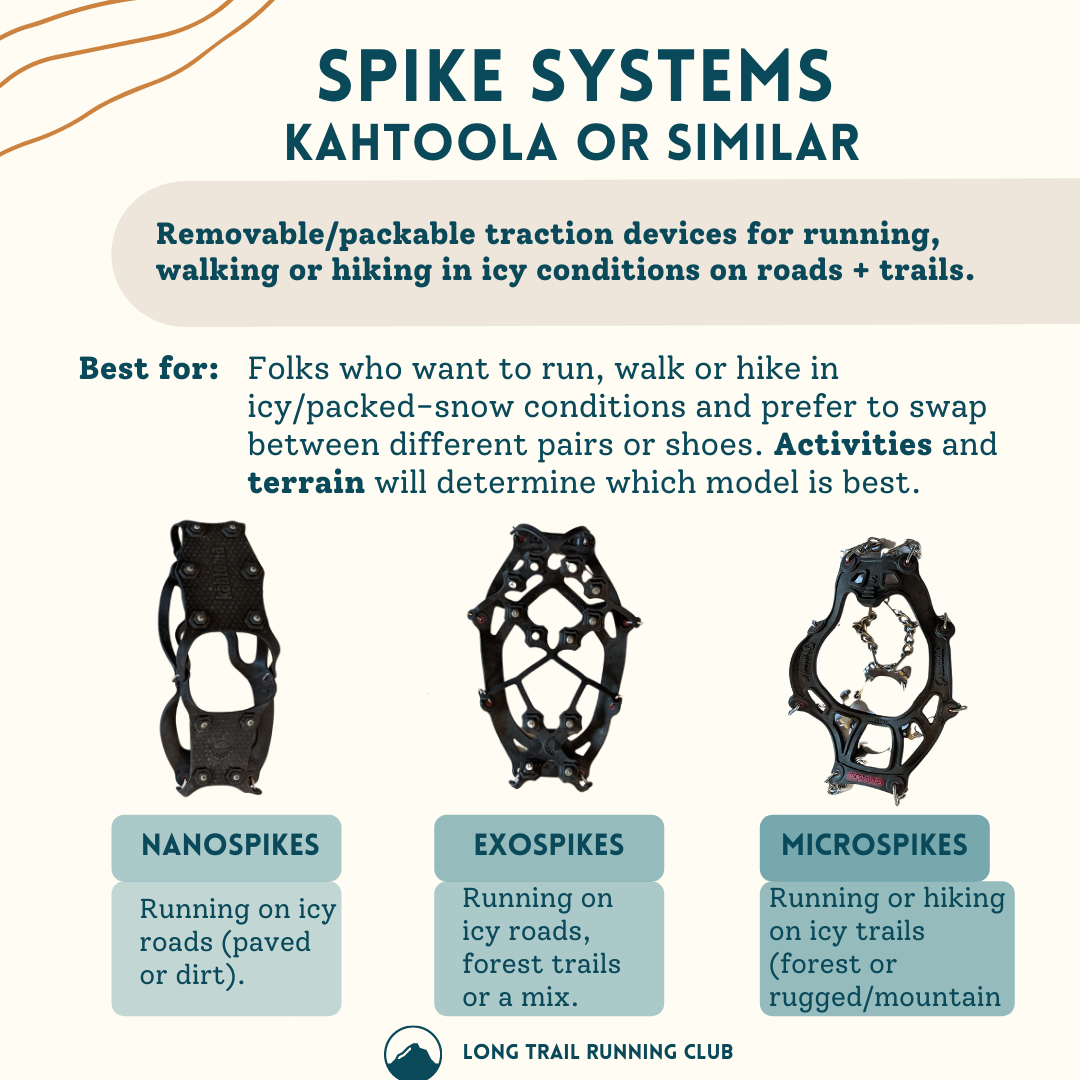Get A Grip: Traction Devices
Just in time for your holiday wishlist...let's talk traction! We've all experienced losing grip under our feet in icy or snowy conditions. Investing in a traction device is a great way to reduce fall risk, boost safety and keep you playing outside without busting your butt (or worse). There are SO many great options out there...but where to begin?
This post gets into some key considerations for picking the ideal traction device for you. As with all gear, there is a lot of personal preference involved - if you can, go to your local gear shop and try on a few options, or borrow a friend’s gear for a test-run!
Quick note: there are more brands and models out there! This guide is based on the equipment I've got experience with (alas I'm just a person, not a gear shop...though our basement would convince you otherwise) and some of the more popular options among our running group. I would love to hear anything different or new that folks have had good experience with! Share the love and intel ❤️
Remember to support your local gear shops over the big box options when you can - the folks there are SUPER knowledgeable and can help get you fitted or decide between options. For our local folks, that includes Outdoor Gear Exchange and Ski Rack in Burlington, AJ’s and Pinnacle out towards Stowe, or Onion River in central VT.
What is a traction device?
Traction devices are gear (or shoes) that improve your grip on slippery surfaces like ice, slush and snow. It’s the equivalent of putting winter tires on your car - in fact, several options replicated “studded snow tires” for your feet. There are several different styles of traction devices, but the high-level categories are:
Built-in traction: This includes specialized winter running with spikes or special grips built into the sole of the shoe, as well as “DIY” options like screw shoes. Built-in traction tends to feel relatively natural and doesn’t add much to the stack height of your running shoe.
Removable traction: These devices are removable and can be swapped between different pairs of shoes (within a given size range). They have rubber or plastic straps/grips that go along the sides or over the toes of your running shoes. Studs or spikes on the bottom provide grip. This category includes yaktrax and microspike varieties. They are packable, removable and often mid-range in price - but can feel a bit less natural on bare road stretches depending on how large/aggresive the spikes are as they add a “layer” underfoot. Proper sizing and fitting to your shoe is key.
I use brand names in the vocabularly below, but you could subsitute similar models from any brand:
How do I choose a traction device?
So…now that we have the options laid out…how the heck do you choose? Which option is “best”? The answer is: it depends. First, ask yourself a few questions about where you plan to run, your preferences and your budget.
Let’s start “big picture”. Everyone’s priorities are different, but in choosing traction for a winter run my top considerations are:
What surface conditions will I run in? This is (personally) my #1 consideration. Will you find yourself on icy roads or trails? Or just packed snow? I prioritize grip on ice because…it’s a reality in New England…and, it’s where most slips, falls, and injuries happen. If you stick to the treadmill when it’s slick out, or live somewhere with consistently snowy conditions - it may not be your top priority. It’s important to note that even if you’re sticking to roads, sidewalks, and rec paths, black ice looks JUST like a wet spot in the winter - you won’t always know it’s slick till you hit it. So when it doubt, assume it’s ice and either get your penguin-walk on, or use traction.
Where will I be doing the majority of my winter runs? There are many traction devices that work well on both road and trail. The real differentiator is when you start to get into options that are geared toward either end of the spectrum. For example, MICROspikes have aggresive study steel spikes that are appropriate for winter hiking and running on relatively rugged trails. But the same spikes are downright annoying (and may even feel unstable) on pavement if you’re running around town. Similarly, NANOspikes are great on roads and light trails (think: rolling hills and forested areas) but may not be enough to grip steep, icy mountain trails.
If you plan on having one option, go for either a true “hybrid” solution for road/trails. If you prefer to have a couple options in your quiver to adjust based on the day’s terrain and conditions, you can get more specialized.
How much do I want to spend on it? It’s a reality - gear costs money and we’ve all got other life expenses. Think about what you want to spend, and consider if you want to set aside some money for any other winter gear needs (a wool baselayer? replace your worn out shoes? buying a ski pass?). Traction options range from $10-$300 so there truly is something for everyone.
Scroll through the slides below for an overview of the conditions that each traction device performs well in, terrain, and cost.




Which device is right for me?
Hopefully that helped narrow it down to a few options that you may be deciding between- let’s dive a bit deeper! The slideshow below offers a detailed breakdown of what conditions each traction device shines in, any negatives or cons to consider, and price range. These are presented from lowest to highest cost. Again, there is no “best” or “worst” device - it’s all relative to the conditions, terrain, and personal perferences.
Follow me down the rabbit hole…








Quick note: Snowshoes are by far the best (and truly only) device for deeper snow. You need the extra surface area to prevent from breaking through and post-holing (sinking into the snow from knee to thigh/crotch deep), which is not fun, and also damages the trail for other users.
Breaking down snowshoe options could be a WHOLE nother post. My experience with them is limited to winter hiking (bigger, more aggresive metal frame snowshoes). If you are a winter snowshoe runner or racer and want to help build some content around the options, feel free to contact me via our form!




